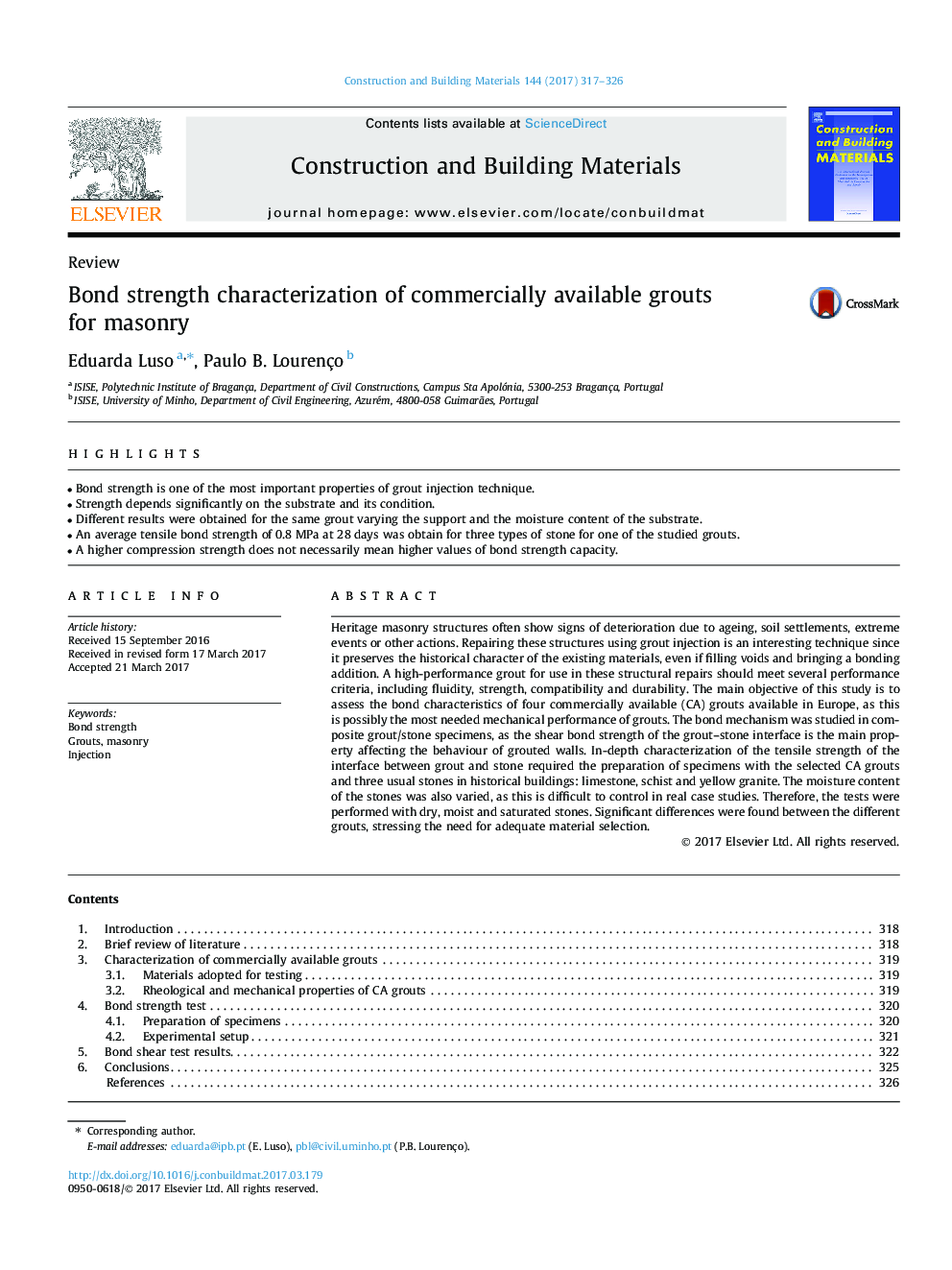| Article ID | Journal | Published Year | Pages | File Type |
|---|---|---|---|---|
| 4913136 | Construction and Building Materials | 2017 | 10 Pages |
Abstract
Heritage masonry structures often show signs of deterioration due to ageing, soil settlements, extreme events or other actions. Repairing these structures using grout injection is an interesting technique since it preserves the historical character of the existing materials, even if filling voids and bringing a bonding addition. A high-performance grout for use in these structural repairs should meet several performance criteria, including fluidity, strength, compatibility and durability. The main objective of this study is to assess the bond characteristics of four commercially available (CA) grouts available in Europe, as this is possibly the most needed mechanical performance of grouts. The bond mechanism was studied in composite grout/stone specimens, as the shear bond strength of the grout-stone interface is the main property affecting the behaviour of grouted walls. In-depth characterization of the tensile strength of the interface between grout and stone required the preparation of specimens with the selected CA grouts and three usual stones in historical buildings: limestone, schist and yellow granite. The moisture content of the stones was also varied, as this is difficult to control in real case studies. Therefore, the tests were performed with dry, moist and saturated stones. Significant differences were found between the different grouts, stressing the need for adequate material selection.
Keywords
Related Topics
Physical Sciences and Engineering
Engineering
Civil and Structural Engineering
Authors
Eduarda Luso, Paulo B. Lourenço,
